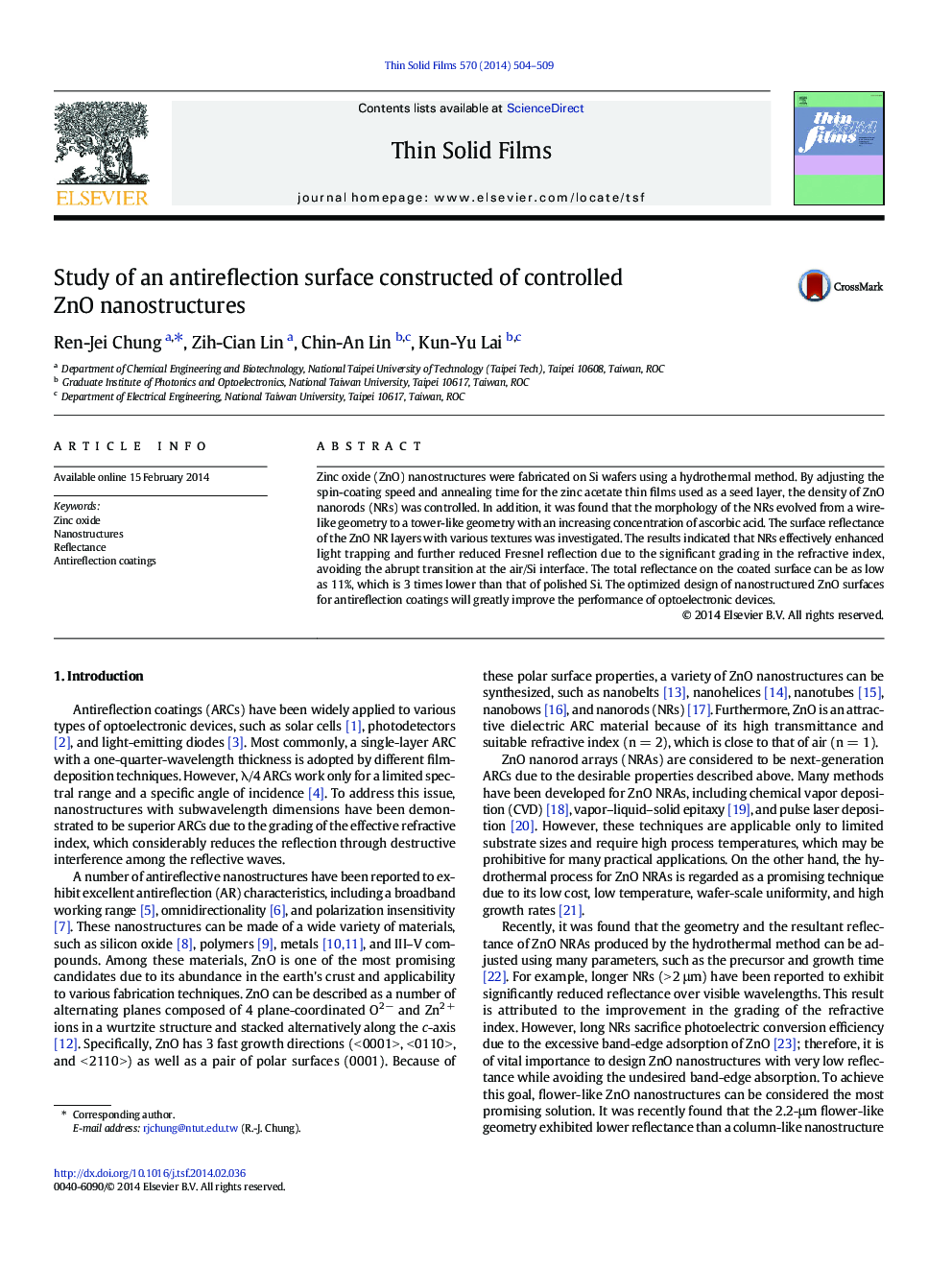| Article ID | Journal | Published Year | Pages | File Type |
|---|---|---|---|---|
| 1664975 | Thin Solid Films | 2014 | 6 Pages |
•Nanotructured ZnO was prepared to serve as an anti-reflection coating.•The geometries of sol–gel prepared ZnO were controlled.•ZnO nanorod, nanoneedle and nanotower arrays were fabricated.•The light reflectance of the nanostructures was much lower than that of bare Si.
Zinc oxide (ZnO) nanostructures were fabricated on Si wafers using a hydrothermal method. By adjusting the spin-coating speed and annealing time for the zinc acetate thin films used as a seed layer, the density of ZnO nanorods (NRs) was controlled. In addition, it was found that the morphology of the NRs evolved from a wire-like geometry to a tower-like geometry with an increasing concentration of ascorbic acid. The surface reflectance of the ZnO NR layers with various textures was investigated. The results indicated that NRs effectively enhanced light trapping and further reduced Fresnel reflection due to the significant grading in the refractive index, avoiding the abrupt transition at the air/Si interface. The total reflectance on the coated surface can be as low as 11%, which is 3 times lower than that of polished Si. The optimized design of nanostructured ZnO surfaces for antireflection coatings will greatly improve the performance of optoelectronic devices.
